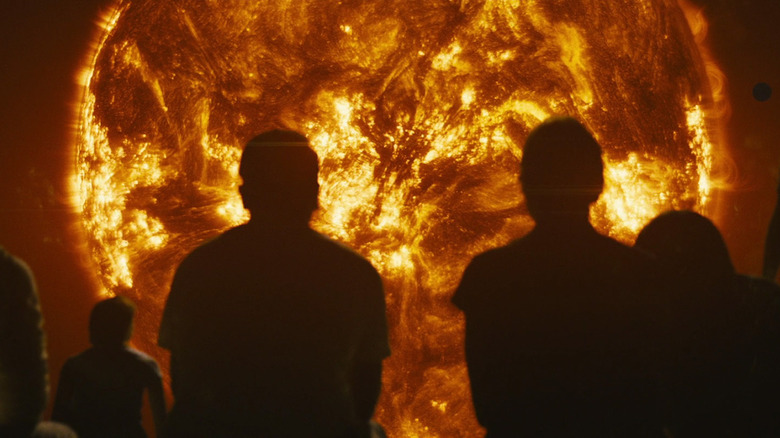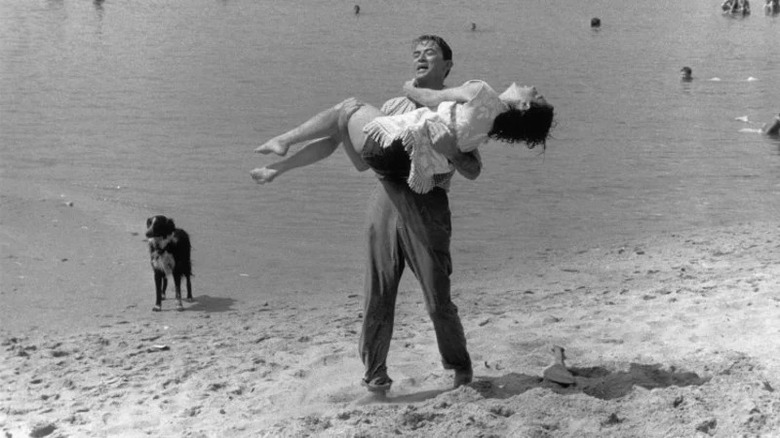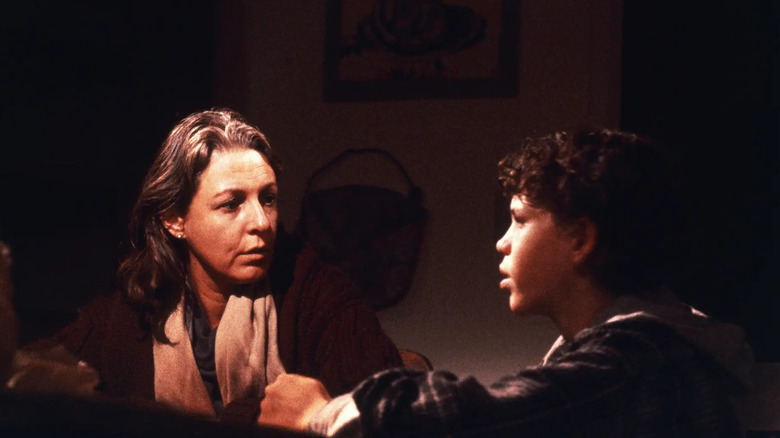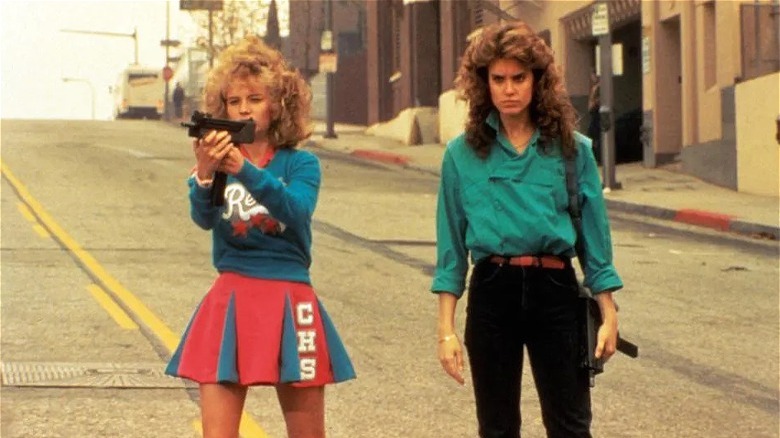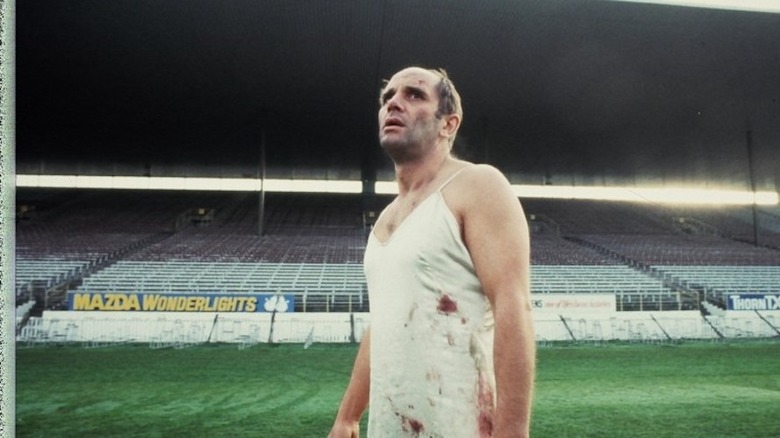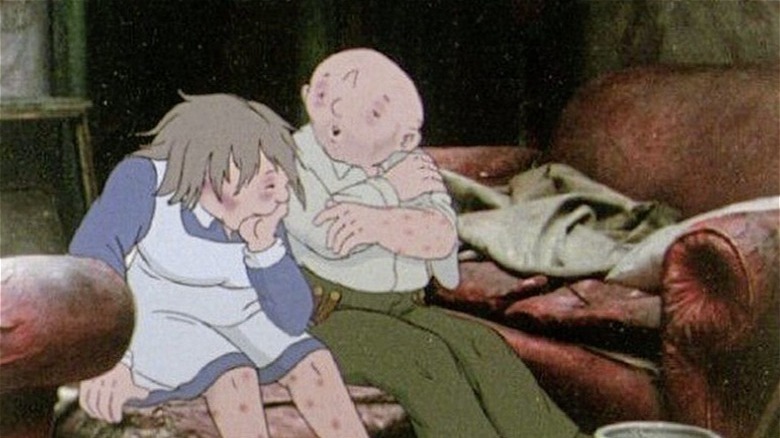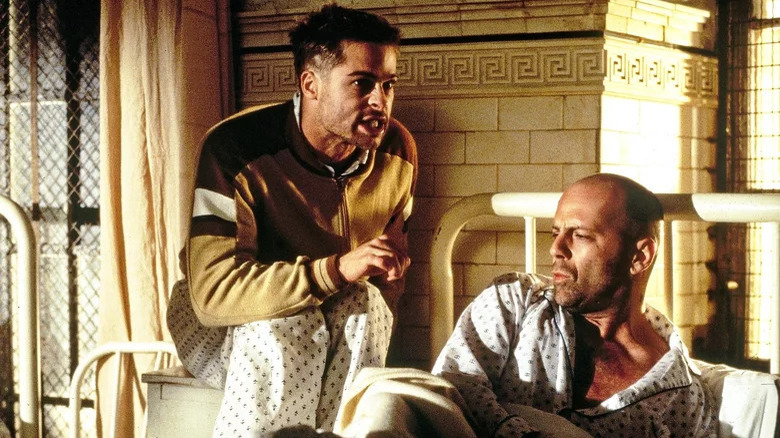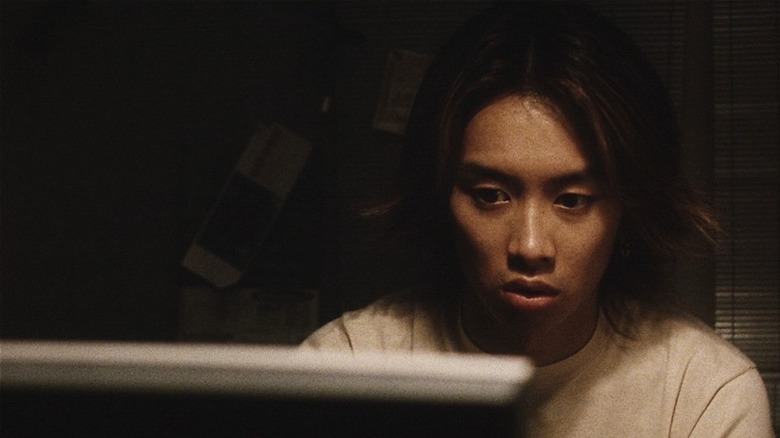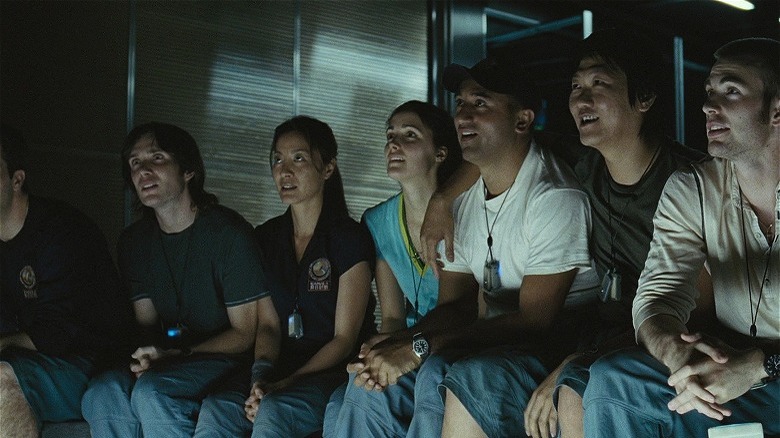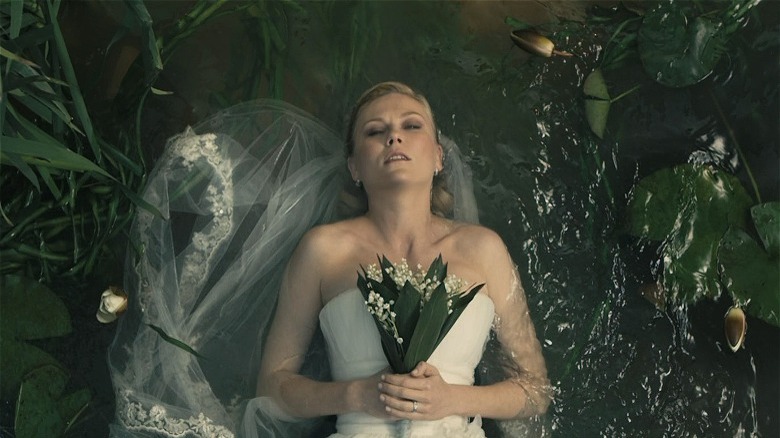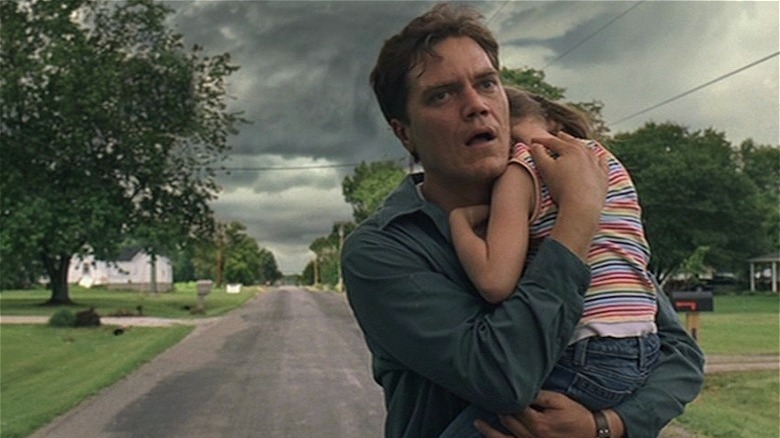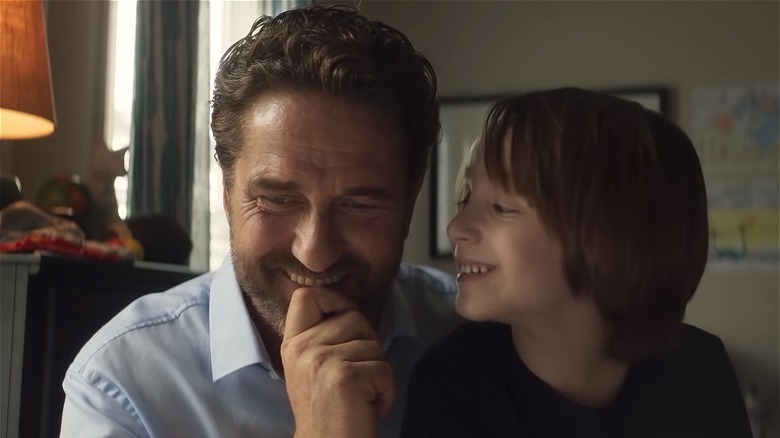12 Underrated Apocalyptic Movies That Deserve Your Attention
The threat of global apocalypse has influenced genre filmmaking from the very beginning. One of the earliest apocalyptic films we have a record of is 1916's "The End Of The World," which illustrates the disastrous consequences of a comet that flies near Earth. The plot is often understood as a response to the near-apocalyptic event of 1910, when Halley's Comet got a little too close for comfort. World events themselves became quite apocalyptic during WWII, but films of this nature actually weren't popular at the time; the news provided enough scares.
The first real heyday of apocalyptic filmmaking came in the 1950s, when the atomic bomb, the Cold War, and the space race stoked fears about impending doom. This fascination with the world ending continued throughout the century. The Cold War lasted through the 1980s, after all, though the ideological focus of these movies changed over time. The 1990s took these movies to an expensive, otherworldly level with films like "Deep Impact" and "Independence Day." It's impossible to ignore the impact of 9/11 on American filmmaking in the 2000s, as classic end-of-the-world stories like "War of The Worlds" and "Invasion Of The Body Snatchers" – remade as "The Invasion" – took on new resonances. Apocalyptic cinema hasn't gotten any less popular today, especially when you consider the predominance of zombie media over the last decade.
Political underpinnings aside, the genre is quite diverse and filled with both hidden gems and widely-seen summer blockbusters. If you're looking to take a deeper dive into the end of the world -– fictionally speaking, that is -– check out this list of underrated apocalyptic films that you, well, should check out.
On the Beach
It probably won't surprise you that the 1950s was a fruitful time for apocalyptic films. Though the decade is often remembered as being defined by a return to normalcy following the war, the period was also characterized by a lot of national and existential anxieties due to the Cold War and the threat of nuclear weapons. The 1959 movie "On the Beach," directed by "Guess Who's Coming to Dinner" filmmaker Stanley Kramer, directly addressed these fears.
The film takes place in 1964 after nuclear warfare destroyed the entirety of the northern hemisphere. Australia is the only safe haven, but winds carrying residual radiation mean the residents of the island won't survive much longer either. Gregory Peck plays Captain Dwight Towers, who arrives in Australia by submarine. He meets Moira (Ava Gardner) and the two find solace in one another, but a final mission may tear them apart. A young husband and wife (played by a pre "Psycho" Anthony Perkins and Donna Anderson), and a weary scientist played by Fred Astaire, join Captain Towers and Moira.
Apocalyptic movies made in the 21st century tend to be all about action and expensive set pieces, but not "On the Beach." Instead of dealing with the threat (and fallout) of nuclear annihilation from a strictly literal perspective, "On the Beach" turns the dystopian premise into pure melodrama. Imagine a Douglas Sirk picture laden with existential dread and a darkly sci-fi inflection.
Testament
The 1980s makred an extremely tense period between America and the Soviet Union, as the threat of nuclear warfare reached a fever pitch by the middle of the decade. This hostile political climate produced a collection of media that addressed such concerns. "The Day After," a widely-viewed TV movie that aired on ABC, explicitly detailed the fallout of a nuclear attack, while the British TV movie "Threads" explored a similar occurrence. 1983 also saw the release of "Testament," a film directed by Lynne Littman. Sadly, few people are familiar with the movie or with Littman, who should certainly be considered a pioneering woman director of sci-fi.
The film unfolds in a small town in the Bay Area and depicts the aftermath of nuclear war. We follow the Wetherly family, headed by parents Tom (William Devane) and Carol (Jane Alexander). As the world falls apart around them, the Wetherlys do their best to keep each other safe while also helping those needing assistance. It's an incredibly heavy film, and Littman takes the time to really sit with the emotional effects of the apocalypse. Much of the movie centers on how a family might bind together in the face of such horror, growing closer despite their looming death. It's a story more about grief than global annihilation, which is why it's so effective and gut-wrenching. Alexander gives the performance of her career here –- receiving a well-earned Oscar nomination for her work -– and it's a shame it hasn't remained in our canon of sci-fi greats.
Night of the Comet
If starkly grief-stricken apocalypse films aren't what you're looking for, we've got just the thing to cure your apocalyptic malaise. The 1984 movie "Night of the Comet," a much sillier take on the end of the world trope, has become something of a cult classic. When a comet flies past Earth, two Valley Girls, Reggie (Catherine Mary Stewart) and Sam (Kelli Maroney), wake up to find they are among the only survivors and that the rest of the population has evaporated or turned into zombies. They spend the day fighting off the flesh-eating undead and trying to evade the doctors who want to experiment on them — and still have enough time to go shopping between adventures.
"Night of the Comet" delivers a blissfully irreverent take on the zombie apocalypse genre, and its goofy "girl-power" humor still resonates today. That might be because "Night of the Comet" inspired one of the most popular fantasy shows of all time, "Buffy the Vampire Slayer." The Valley Girl humor combined with the unexpected butt-kicking is such a treat, and the film's satirical takes on consumerism and Reagan-era politics are pretty brilliant. With its blazing red hue and a killer '80s soundtrack, "Night of the Comet" perfect mixes corny and canny.
The Quiet Earth
What would you do if you woke up and found you were the only person left on Earth? The 1985 New Zealand film "The Quiet Earth" poses that very question. Bruno Lawrence plays Zac Hobson, a scientist working on a potentially dangerous experiment. He wakes one morning and discovers the entire city is deserted, and he begins to suspect he may be entirely alone in the world. His isolation is interrupted by the arrival of a young woman named Joanne (Alison Routledge), and later a Māori man named Api (Pete Smith). A love triangle develops between the three survivors, but Zac focuses more on analyzing the strange phenomena that have begun to occur than any romance.
We eventually learn why exactly these three survived -– we won't spoil that particular twist — but suffice it to say it's pretty wacky. What follows is a pleasurably ambiguous and relatively daring take on the "last man on Earth" premise. It may not make a ton of scientific sense, but astrophysicist Neil deGrasse Tyson gave it his stamp of approval, calling the film one of his favorites. He even recorded a voice-over commentary with critic Odie Henderson. The movie may have a B-movie quality to it, but it's ambitious enough to get the wheels of any curious viewer's mind spinning. While some of the special effects don't quite hold up, the questions posed in the film sure do.
When the Wind Blows
Hand-drawn animation might not seem like an obvious artistic choice for a story about the aftermath of nuclear war, but "When the Wind Blows" proves it may actually be the perfect medium to depict such a narrative. Directed by Japanese-American filmmaker Jimmy Murakami, the movie follows an elderly couple, Jim (John Mills) and Hilda Bloggs (Peggy Ashcroft), who live in rural England and attempt to survive following a nuclear attack. Having safely made it through WWII, Jim and Hilda are confident they will survive a war with the Soviets.
Jim and Hilda go about the preparations they've been instructed to follow by the government, and they manage to take shelter when the nuclear strike hits. Even after the attack destroys all their utilities along with all the plants and animals, the couple remains convinced they can weather the storm. When they both begin to develop symptoms of radiation poisoning, the truth becomes harder to ignore, but they do the best they can to keep on trucking.
The film combines hand-drawn animation with stop-motion, giving it a very unique look, and features a score by Pink Floyd member Roger Waters and a song by David Bowie, which really drives home the British perspective. It's an equally frustrating and harrowing watch, as Jim and Hilda's total ignorance about their dire situation is enough to drive you up the wall. But that's also the point of the film, as it illustrates the futility of preparing for nuclear warfare.
12 Monkeys
"12 Monkeys" is an apocalyptic time travel movie unlike anything you've seen before. Well, that's not entirely true; the movie is actually based on the 1962 short film La Jetée, one of the most influential pieces of cinema to come out of the Left Bank movement in France. Terry Gilliam's 1996 take on the French classic stars Bruce Willis as James Cole, an incarcerated man living in 2035. A deadly virus ravaged the world, killing most of the population, and survivors must live underground.
James heads back in time to investigate the virus's origins, but instead of arriving in 1996 (when it was released), he arrives in 1990 and promptly ends up imprisoned in a mental hospital. While there, James encounters Dr. Kathryn Railly (Madeleine Stowe), a psychiatrist, and Jeffrey Goines (Brad Pitt), a patient who may have the answers James seeks. James also works to investigate the origin of a group known as the Twelve Monkeys, the group thought to be responsible for spreading the deadly virus.
While the plot of the film feels somewhat jumbled at times, the twists and turns in the latter half make up for any preceding confusion. Willis, Pitt, and Stowe all give intense, dedicated performances that make the movie's outlandish premise (mostly) stand up to scrutiny. Gilliam's mash-up of genres –- a post-apocalyptic film, a virus thriller, a mental institution dramedy –- really shouldn't mesh, but it somehow all comes together in a way that, if not entirely smooth, is at least wildly entertaining.
Pulse
"Pulse" may very well be one of the most unsettling films ever made. And before you ask, no, we're not talking about the abomination that is the 2006 remake, but rather the original 2001 film from J-horror legend Kiyoshi Kurosawa. On the surface, "Pulse" might not seem like an apocalypse film, but it becomes exactly that. Set in Tokyo, the movie centers on an army of ghosts who break the veil between the world of the dead and the world of the living via the internet. People all around the city begin disappearing, leaving only haunting black shadows on the walls behind them. The origin of this phenomenon seems to be a website that streams unsettling images connected to the ghost world.
As more and more people begin disappearing, the remaining survivors try to figure out how to stop the oncoming undead invasion before becoming ghosts themselves. The film employs very few tricks of the horror trade -– jump scares, monstrous creatures, drawn-out suspense -– but still manages to disturb the viewer on an almost visceral level.
Like with many apocalyptic films, the main topic at hand here is the devastating effects loneliness can have on a person. The film also presents an amazingly prescient look at how the internet amplifies these feelings of loneliness and isolation that have become almost endemic in today's society. Both a virus movie and something akin to an alien invasion film, "Pulse" is equal parts terrifying and touching, and remains peerless in the genre.
Sunshine
"Sunshine" is an apocalyptic disaster film of epic proportions. Directed by Danny Boyle and written by "Annihilation" filmmaker Alex Garland, the movie takes place in 2057 and follows a group of scientists sent to resurrect the dying sun. When the first mission fails, the second team travels back into space as humanity's only hope.
The film features an international ensemble cast that includes Cillian Murphy, Chris Evans, Rose Byrne, Michelle Yeoh, Cliff Curtis, Troy Garity, Hiroyuki Sanada, Benedict Wong, Chipo Chung, and Mark Strong. Because the crew was supposed to have been together for 16 months at the start of the tale, Boyle instructed the actors to live together and participate in space training and scuba diving in order to dig into the subject matter.
The results prove scary and thought-provoking, addressing the threat of climate change that has only become more pressing since the film premiered. What it sometimes lacks in common sense it makes up for in philosophical curiosity, asking invigorating questions about the inexorable strength of humankind and the cost of survival. The visuals are as dazzling as the cast of brilliant performers who work together as a fearless team, just as Boyle intended. You probably won't be able to guess where in the world (or universe) this movie goes, but in this case, the journey is more important than the destination.
Melancholia
As its title suggests, Lars von Trier's 2011 film "Melancholia" delves more into depression and interpersonal angst than it does the apocalypse. Trier has described the film as both "a psychological disaster movie" and "a beautiful movie about the end of the world." Kirsten Dunst plays Justine, a woman struggling with depression. Justine is all set to marry Michael (Alexander Skarsgård), but it doesn't quite go as planned. Justine moves into a castle owned by her sister, Claire (Charlotte Gainsbourg), and brother-in-law, John (Kiefer Sutherland). As Justine's depression worsens, the family learns of a planet — called Melancholia — heading on a direct collision course with Earth.
Von Trier divides "Melancholia" into two parts. The first depicts Justine's descent into a depressive episode, much to the consternation of those around her. The second part illustrates the effects of the impending apocalypse. Justine's normally composed sister, Claire, begins to quickly come apart by the seams, while Justine calmly accepts their fate. Faced with the end of the world, Justine's depression actually becomes an asset and allows her to stomach these new circumstances in a way others cannot.
"Melancholia" is a deftly composed fusion of high-concept science fiction and art house drama, and despite its grand ambitions, it never loses track of its core focus. The message of the film became even more astute during lockdown, when those living with anxiety found it easier to cope than many of their peers. The movie's topic may hit too close to home for some, but there is a beautiful catharsis to be found here.
Take Shelter
Like "Melancholia," which came out the same year, "Take Shelter" explores the apocalypse through the lens of mental illness. Michael Shannon plays Curtis LaForche, an Ohio man who lives in a small town with his wife, Samantha (Jessica Chastain), and daughter, Hannah (Tova Stewart). Though they sometimes struggle financially, they generally lead a happy, peaceful life. Things take a dark turn when Curtis experiences visions of an impending apocalypse. He tries to prepare his family for the worst by building a storm shelter, but worries he may be losing touch with reality.
On paper, "Take Shelter" reads like an apocalyptic thriller, but it's really a moving –- and terrifying -– account of mental illness. Shannon gives a masterful performance as a man tormented by his own anxiety and paranoia, and Chastain is typically powerful as his stalwart spouse. The film is a skillfully designed slow burn that quietly builds up a sense of dread as time ticks by. While we might begin to suspect there is more going on than meets the eye, we're never quite sure where the truth of the matter lies. Shannon takes us on a journey into his character's paranoid mind until we question reality ourselves. Is that really a thunderstorm outside, or is it just in our minds?
The Girl with All the Gifts
Fans of "The Last of Us" will surely recognize the zombie-infested narrative of "The Girl with All the Gifts." Colm McCarthy's 2016 film takes place in the future, where a mysterious fungus has turned most of the populace into mindless, flesh-eating zombies. The last hope for humanity? A group of second-generation zombie children known as neonates, who thirst for flesh but can learn and control their hunger. The neonates reside in a facility run by Dr. Caroline Caldwell (Glenn Close), who experiments on the children, and Helen Justineau (Gemma Arterton), who teaches them. When zombies breach the facility, Helen and Dr. Caldwell escape with Melanie (Sennia Nanua), a child whose unique gifts might save the world.
While the plot of the film may sound somewhat tired now considering the success of "The Last of Us," it's a smart and inventive take on the zombie genre that recalls previous works without being derivative. Led by impressive performances from Close and Arterton and a stunning debut from newcomer Nanua, enough intrigue plays out here to entertain even the most voracious zombie lovers. The concept of a young "chosen one" is one of the oldest stories in the book, but "The Girl with All The Gifts" freshens up the narrative by bringing it into this gory, bleak world. Children may be the future, but in this case, they're also zombies.
Greenland
For obvious reasons, 2020 did not pan out well for Hollywood, which may be part of the reason why not many people have seen the end-of-the-world film, "Greenland," upon its release that year. Gerard Butler plays John Garrity, a man living in Atlanta with his estranged wife, Allison (Morena Baccarin), and their son, Nathan (Roger Dale Floyd). When a comet that was predicted to pass safely by Earth instead enters the atmosphere, the family goes on the run in search of shelter. After they are denied passage on an evacuation flight due to Nathan's diabetes, the Garritys traverse the world seeking sanctuary, encountering both the best and worst in people on their journey.
"Greenland" certainly doesn't reinvent the wheel when it comes to apocalypse films, but it's a well-constructed, well-acted disaster movie. While we've come to expect disaster movies to be all about CGI and big explosions, "Greenland" instead focuses on the nuances of a family dynamic and the relationships between the people who are fighting to survive. A surprisingly grounded take on the genre, the film is nonetheless tense and thrilling –- a popcorn movie elevated by smart writing. Butler often portrays characters who seem like they can persevere no matter the circumstances, but "Greenland" compellingly illustrates how helpless we all really are as humans. Is that terrifying enough for you?
